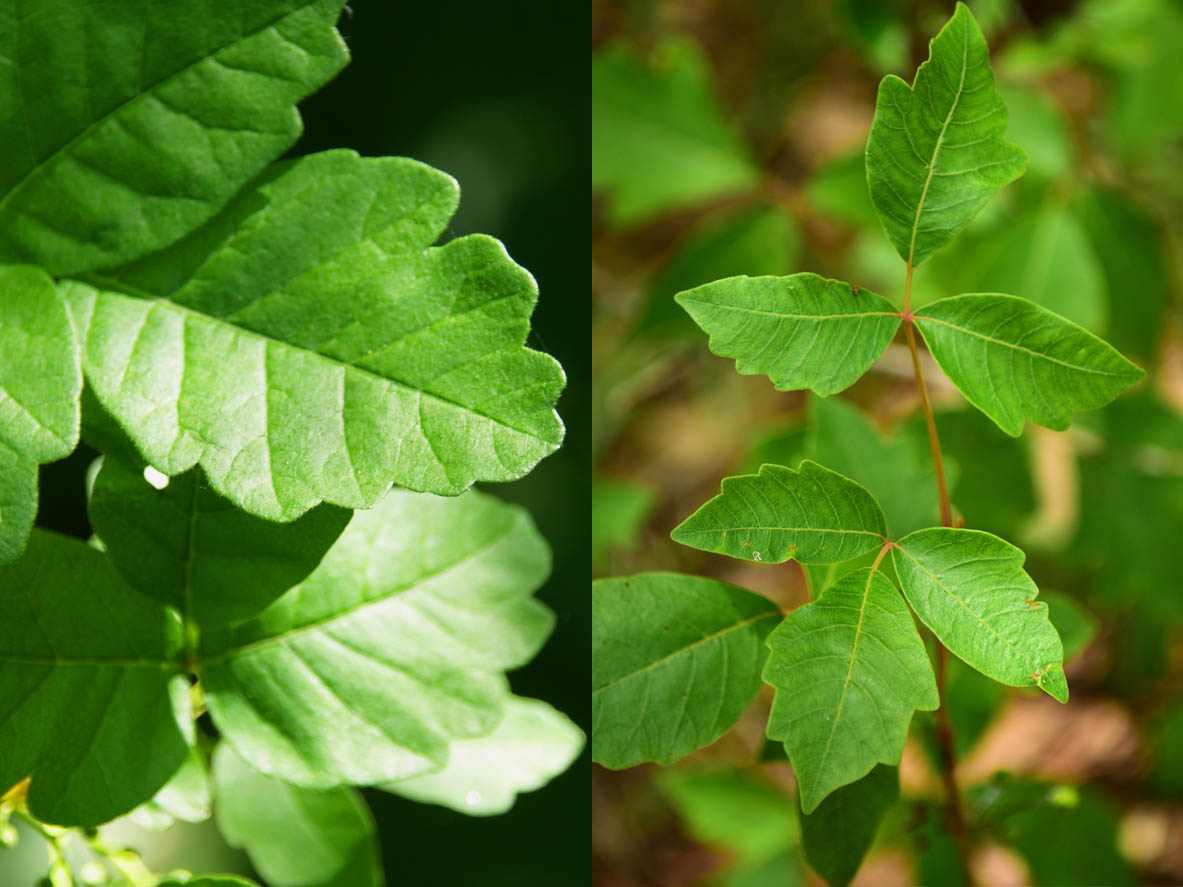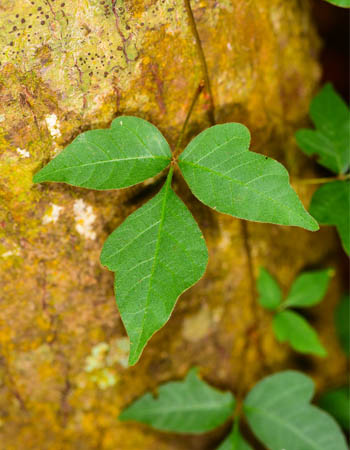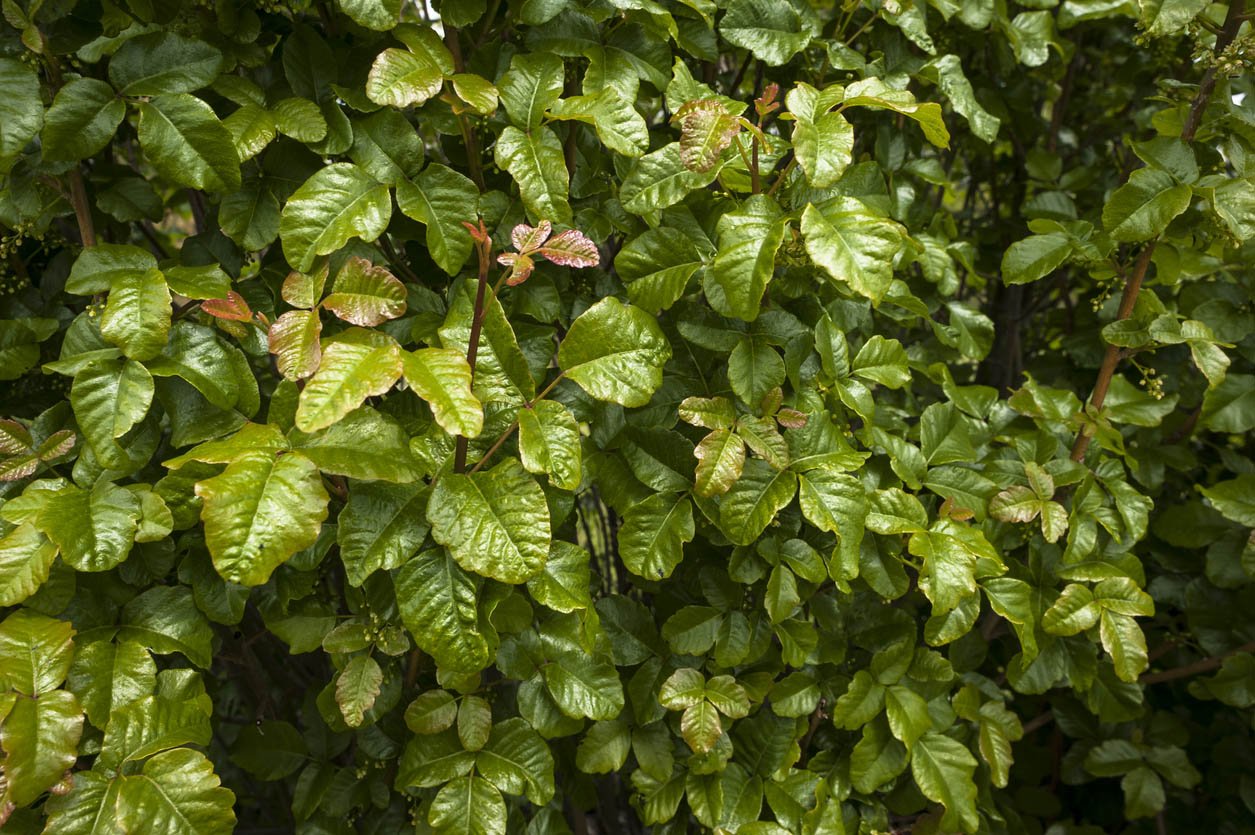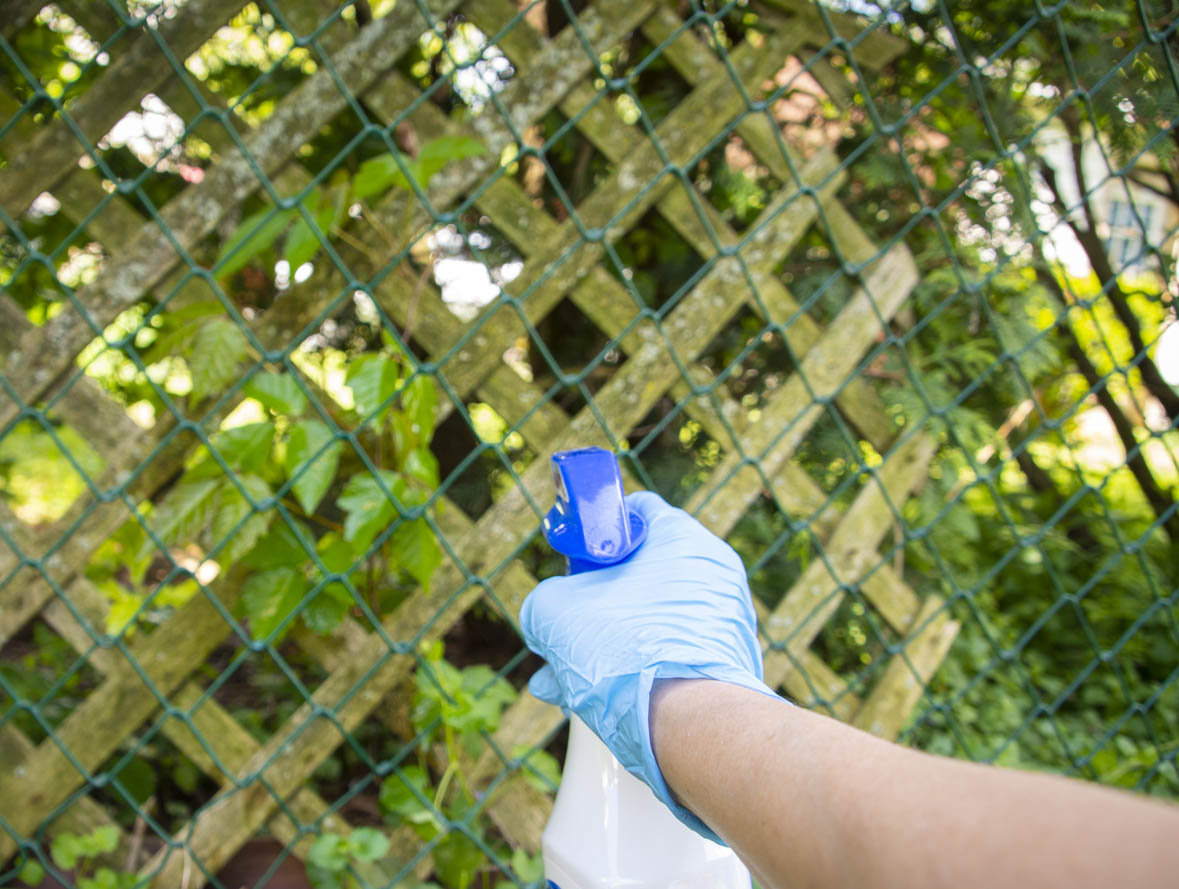

We may earn revenue from the products available on this page and participate in affiliate programs. Learn More ›
Outdoor activities are fun and refreshing—unless poison ivy or poison oak ruins the day. These invasive plants secrete a toxic oil called urushiol, which causes an unpleasant swollen and itchy rash for up to 2 weeks in most people who come in contact with it. Though the plants may seem similar, the differences between poison ivy vs poison oak can help identify the plants more quickly if one is exposed. The old saying, “Leaves of three, let it be,” is a basic rule of thumb for caution around unknown plants. If you suspect one of these plants is growing on your property, take prompt action to remove it.
1. Poison ivy most often grows as a vine, while poison oak can grow as a vine or a shrub.

Poison ivy generally grows as a vine or ground covering plant on the East Coast or a shrub on the West Coast. The vine can be fuzzy—avoid touching to check it, though. Poison oak usually grows as a low shrub on the southeastern coast but grows in tall shrubs or vines up to 3 feet tall on the West Coast or in the South.
2. Poison ivy has three almond-shaped leaves, and poison oak has groups of three leaves shaped like oak leaves.
The leaves on a poison ivy plant are always in clusters of three. They are a rich green color and shiny, but they turn reddish in the fall. Poison ivy leaves are elongated or almond-shaped, sometimes with a scalloped edge. According to Ali Malik, the Poison Ivy Specialist, “It is not uncommon for each of the three leaves on one stem to have different characteristics such as color, size or shape.”
Poison oak leaves also grow in clusters of three. The leaves are dark green but often have a reddish tint. They are wider and look similar to an oak leaf with a rounded tip. The leaves can range from the length of a thumb to the length of a hand.

3. Poison ivy has fuzzy-bottomed green leaves, and poison oak has shiny green leaves and may have green-yellow berries.
The underside of poison ivy leaves has a fuzzy or velvety feel, similar to the vine. Poison ivy often produces small, pumpkin-shaped berries that are whitish green. Poison oak leaves may have fuzziness on both sides of the leaves or they may be smooth and shiny, depending on the region. The round-tipped poison oak leaves generally have more lobes or jagged edges on their leaves than poison ivy. Small green-yellow berries grow on poison oak plants and usually turn tan in the fall when mature.
4. Poison ivy grows throughout the U.S., whereas poison oak is native to western and southern U.S. states.
According to Malik, poison ivy grows throughout the United States, Canada, Mexico, and some parts of Asia. Poison ivy does not thrive in dry climates or altitudes above 4,000 feet. These plants are often found near roadways, along trails, or along fences. Poison oak is most common in southern and western U.S. states. The Pacific variety is located on the West Coast, and the Atlantic variety grows from Missouri to Illinois and Texas to Florida.
5. Poison ivy rashes vs poison oak rashes: what’s the difference?
The rashes from poison ivy vs poison oak are similar in appearance. Most people will experience a painful or itchy rash from poison ivy or poison oak within 12 to 48 hours. A poison ivy rash will swell and itch, and it may form blisters. The rash often appears in a streak following the direction the plant brushed against the skin. A poison oak rash could take up to a week to appear. Poison oak causes swelling with itchy, red rashes that may blister. If the rash spreads to the face or eyes, or a fever develops, seek medical attention.

Getting Rid of Poison Oak or Poison Ivy
Birds often eat the berries from both plants and deposit them on your property, where they take root and grow. If you identify poison ivy or poison oak on your property, take steps to eliminate these invasive plants quickly. The urushiol sap can linger on clothing, pet fur, and tools, risking exposure long after initial contact. Since urushiol isn’t water soluble, any item that comes in contact with the sap will need to be washed with a strong soap.
Working around poison ivy and poison oak requires extra precaution to avoid coming in contact with the plant. Some chemical herbicides can kill the plant, but the herbicide must contain glyphosate or triclopyr, and any nearby plants may also be killed in the process. Avoid burning poison ivy and poison oak, as the smoke from the urushiol is toxic. A professional removal company has safety procedures to remove these plants, whether with herbicides or by digging out every deep root to prevent regrowth.
